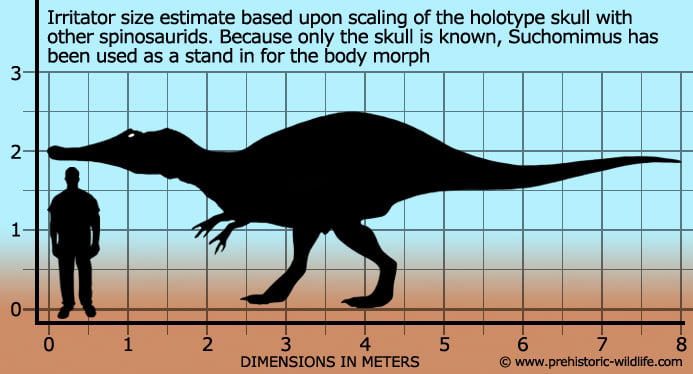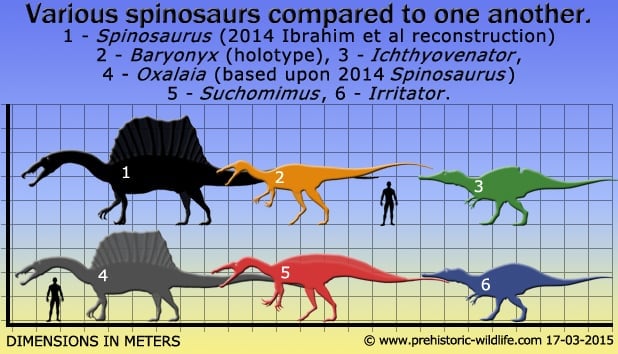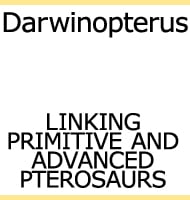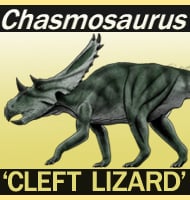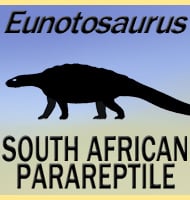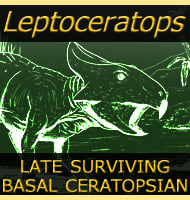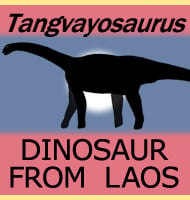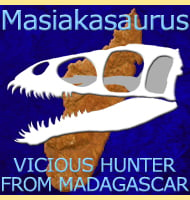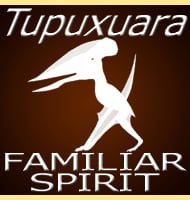In Depth
Irritator is proof that palaeontologists do have a sense of humour even if it is a dry one. The holotype specimen of Irritator was a skull that had been artificially elongated by illegal fossil collectors in the hope of increasing its monetary value (plainly speaking, to get more money for the fossil). Before the skull could be studied and described to science the first job that had to be done was correct the lengthening work, a long and pain staking process that needless to say irritated those involved. The species name I. challengeri is a little less dramatic with the species named after Professor Challenger, a fictional character in the classic Arthur Conan Doyle story The Lost World. For those not already familiar this story it is about an expedition that scales a plateau in the Amazon Basin where they discover dinosaurs and other prehistoric creatures are still alive and well.
Because the skull was acquired from ‘unofficial’ sources the exact location is unknown for certain, but the researching palaeontologists have managed to narrow down the options to the Chapada do Araripe (often referred to in English as the Araripe Plateau) part of the Santana Formation. This location was deduced by analysis of micro fossils found with the specimen that are also known to be present in this area as well as talking to local fossil dealers. Detailed comparison of the evidence has additionally pointed to the Romualdo Member. Further support for this location comes from the discovery of further spinosaurid material that is referred to the Angaturama genus. Not only can this be taken as the presence of other spinosaurids, Angaturama may in fact be the same genus as Irritator. The Irritator holotype skull is missing its forward snout portion, but interestingly Angaturma’s holotype is equal to the front portion of the snout that is missing in Irritator. This has led some palaeontologists to strongly consider the possibility that Angaturama is not only the same genus as Irritator, but is also the same individual as the holotype. The only thing that has stopped palaeontologists being one hundred per cent certain so far is that the Angaturama specimen seems to have come from an individual that had a higher and flatter head than the Irritator holotype. Both Irritator and Angaturama were both named in 1996, but since Irritator was named earlier in that year, it would have naming priority over Angaturama if they were ever proven without doubt to be the same.
South America has produced steady spinosaurid remains since the 1990’s, and aside from Irritator and the dubious Angaturama, other genera such as Oxalaia (possibly one of the largest spinosaurids) have also been named. Current fossil evidence suggests that spinosaurids may have originated in Western Europe or North Africa as indicated by the early appearance of Baryonyx in the fossil record. Later members such as Suchomimus may have then radiated out across land bridges between Africa and South America, basically following locations of suitable habitat.
The spinosaurids are generally associated with environments where they have access to water systems such as river deltas where they can use their special hunting adaptations to pluck large fish from the water. The skull of Irritator displays the key characteristic of spinosaurids in that the jaws are long and filled with large but relatively thin teeth suitable for seizing slippery prey, giving Irritator’s skull a crocodile like appearance. Despite this special adaptation for fish Irritator probably supplemented its diet by scavenging carrion, something that all predators do when the opportunity presents itself. Spinosaurids are known to have included other types of prey into their diet as evidenced by the discovery of juvenile Iguanodon remains with Baryonyx in England, and pterosaur vertebrae with a spinosaurid tooth stuck into it, a fossil that was also discovered in Brazil. This evidence can point to either scavenging or even active predation of these animals, but the special teeth of Irritator like other spinosaurids work best for holding, not killing prey. Although not discovered with the holotype, Irritator may have had enlarged claws on its hands that were capable of rending flesh. These claws are commonly associated with Baryonyx (whose name means heavy claw after the size of the hand claws) and Suchomimus, and so far seem to be a common trait in spinosaurids that may have evolved as a result of the lack of shearing teeth in the mouth.
Another possible trait is the presence of enlarged neural spines of the dorsal vertebra for the purpose of either supporting a sail or a hump on the back. These can be clearly seen in both Suchomimus and Spinosaurus, although not Baryonyx. However because Baryonyx is based upon what is thought to have been a juvenile individual, it simply may not have had time to grow the enlarged neural spines when it died. So far the presence of a dorsal structure on Irritator remains unknown, but is a potential possibility. One feature that makes Irritator stand out from others of its kind is the presence of a sagittal crest that is part of the parietal bone, although the describers think that the rear portion of this crest was enhanced by the fossil dealers.
Further Reading
– A new crested maniraptoran dinosaur from the Santana Formation (Lower Cretaceous) of Brazil. – Journal of the Geological Society, London 153:5-8. – D. M. Martill, A. R. I. Cruickshank, E. Frey, P. G. Small & M. Clarke – 1996. – Irritator challengeri, a Spinosaurid (Dinosauria: Theropoda) from the Lower Cretaceous of Brazil. – Journal of Vertebrate Paleontology 22 (3): 535. – H. D. Sues, E. Frey, D. M. Martill & D. M. Scott – 2002.
